Publications |
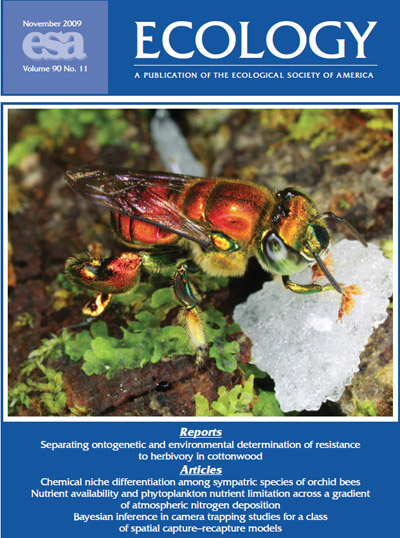
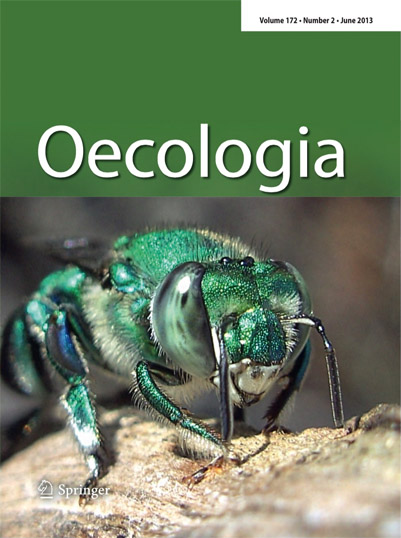
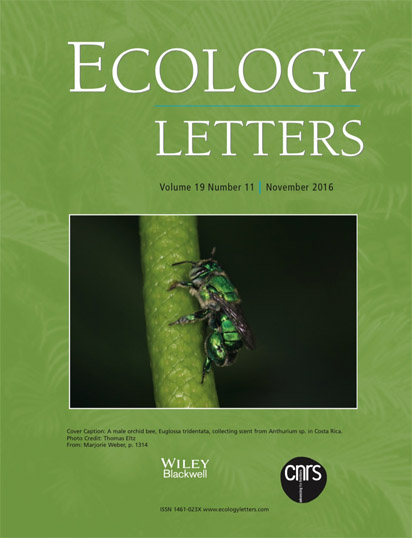
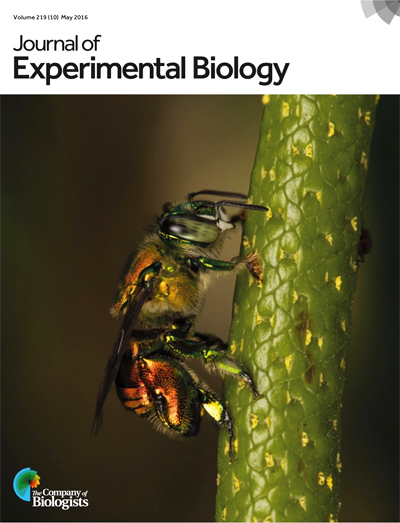
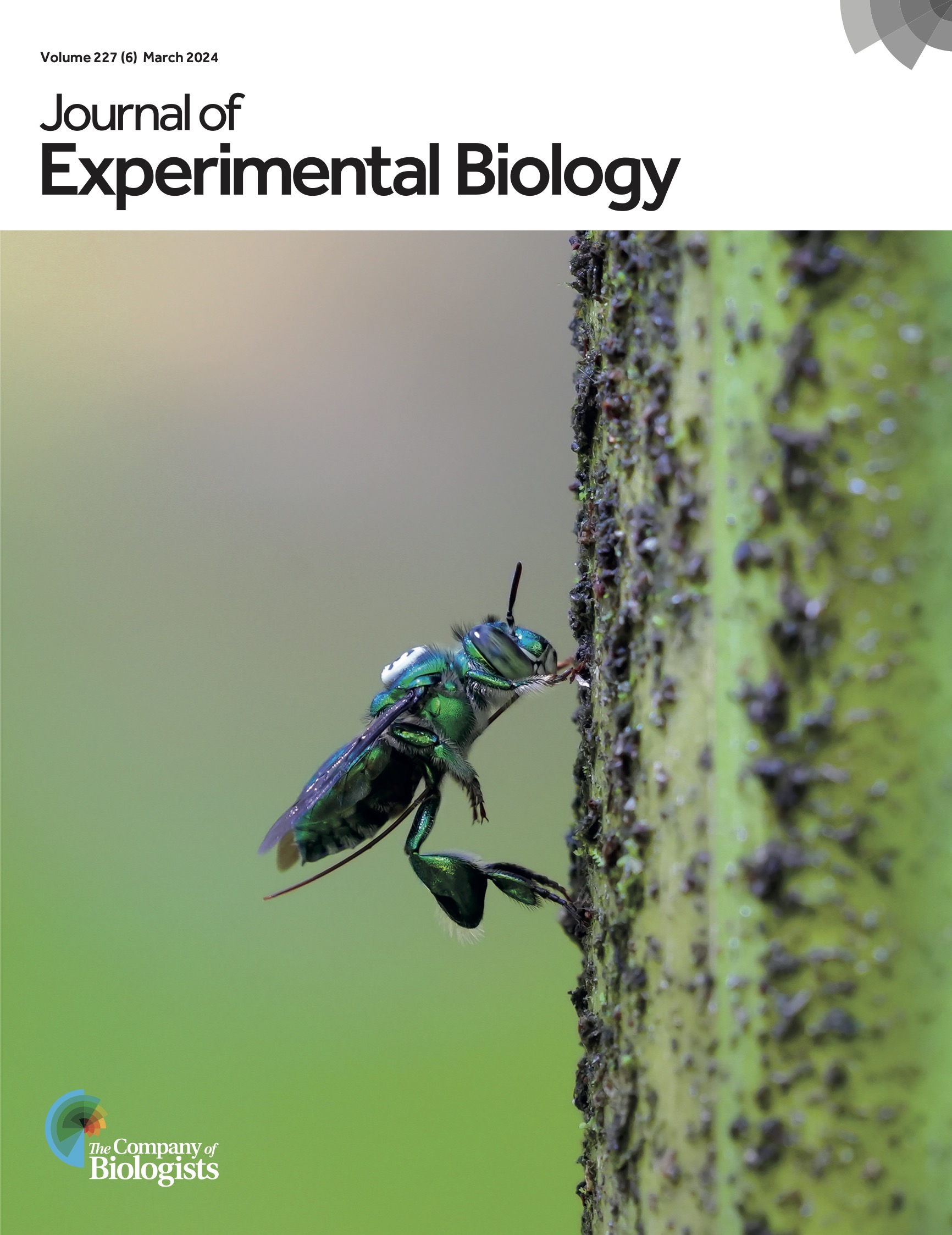
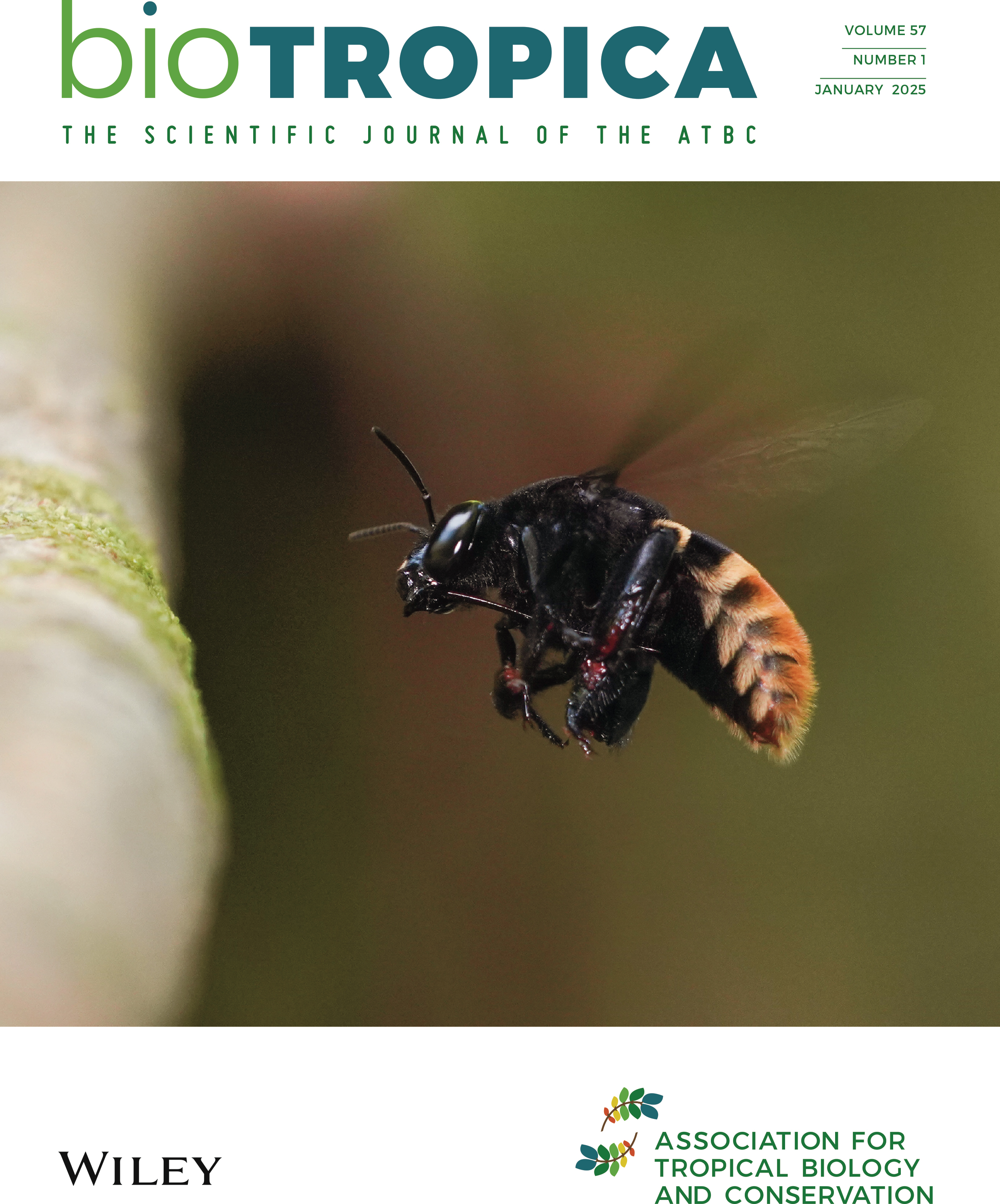
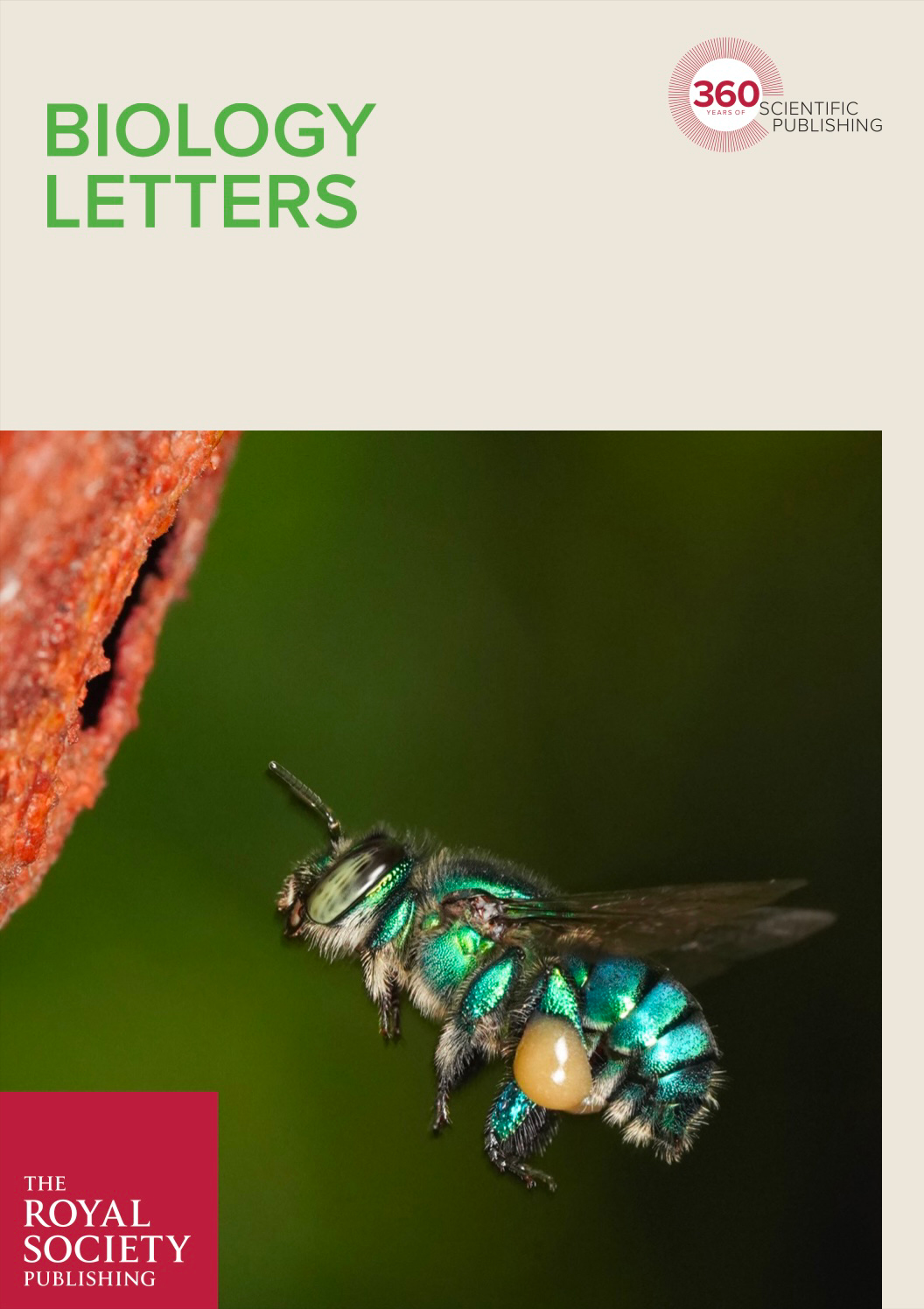
Sigl, M., Virgo, J., Grafe, U., Henske, J., Schweinsberg, M., Eltz, T. (2025) Uninvited guests: diversity and specificity of Trypanosoma infections in frog-biting midges (Corethrella spp.). Parasites & Vectors 18: 348. PDF Henske, J., Fernández Otárola, M., Dohrs, J., Eltz, T. (2025) Nest founding by mixed kin groups in communally nesting orchid bees. Biology Letters, 21, 2025003. PDF Henske, J., De Dijn, B.P.E, Eltz, T. (2025) Non-floral scent sources of orchid bees: observations and significance. Biotropica 57, e13395. PDF Eltz, T., Mende, T., Ramírez S.R. (2024) Evolution of acquired perfumes and endogenous lipid secretions in orchid bees. Journal of Chemical Ecology 50, 430-438. PDF Henske, J., Eltz, T. (2024) Age-dependent perfume development in male orchid bees, Euglossa imperialis. Journal of Experimental Biology 227. PDF Inside JEB Henske, J., Saleh, N.W., Chouvenc, T., Ramírez, S.R., Eltz, T. (2023) Function of environment-derived male perfumes in orchid bees. Current Biology 33, 2075-2080. PDF Nature Research Highlight Herrera-Mesías, F., Bause, C., Ogan, S., Burger, H., Ayasse, M., Weigand, A.M., Eltz, T. (2022) Double-blind validation of alternative wild bee identification techniques: DNA metabarcoding and in vivo determination in the field. Journal of Hymenoptera Research 93, 189–214. PDF Virgo, J., Eltz, T. (2022) Feeding site specificity in frog-biting midges (Corethrellidae). Journal of Insect Behavior 35, 155-159. PDF Saleh, N.W., Hodgson, K., Pokorny, T., Mullins, A., Chouvenc, T., Eltz, T., Ramirez, S.R. (2021) Social behavior, ovary size, and population of origin influence cuticular hydrocarbons in the orchid bee Euglossa dilemma. American Naturalist 198, E136-E151. PDF Virgo, J., Ufermann, L., Lampert, K.P., Eltz, T. (2021) More than meets the eye: decrypting diversity reveals hidden interaction specificity between frogs and frog-biting midges. Ecological Entomology 47, 95-108. PDF Brand P., Hinojosa-Díaz I.A., Ayala R., Daigle M., Yurrita Obiols C.L., Eltz T., Ramírez S.R. (2020) The evolution of sexual signaling is linked to odorant receptor tuning in perfume-collecting orchid bees. Nature Communications 11:244. PDF Pokorny T., Millahn E., Schlütting P., Ramírez S.R., Eltz T. (2019) Correlates of display activity and perch residency of male orchid bees in cage experiments. Acta ZooBot Austria 156:159-169. PDF Virgo J., Ruppert A., Lampert K.P., Grafe T.U., Eltz T. (2019) The sound of a blood meal: Acoustic ecology of frog‐biting midges (Corethrella) in lowland Pacific Costa Rica. Ethology 125:465-475. PDF Eltz T., Josten S., Mende T. (2019) Stored perfume dynamics and consequences for signal development in male orchid bees. Journal of Comparative Physiology a-Neuroethology Sensory Neural and Behavioral Physiology 205:311-320. PDF Hedenström E, Andersson F, Sjöberg N, Eltz T (2018) 6-(4-Methylpent-3-en-1-yl)naphthalene-1,4-dione, a behaviorally active semivolatile in tibial perfumes of orchid bees. Chemoecology 28:131–135. PDF Kämper W., Blüthgen N., Eltz T. (2017) Bumblebee footprints on bird’s-foot trefoil uncover increasing flower visitation with land-use intensity. Agriculture, Ecosystems and Environment 240: 77-83. PDF Pokorny P., Vogler I., Losch R., Schlütting P., Juarez P., Bissantz N., Ramirez S.R., Eltz T. (2017) Blown by the wind: the ecology of male courtship display behavior in orchid bees. Ecology 99: 1140-1152. PDF Kämper W., Weiner C., Kühsel S., Storm C., Eltz T., Blüthgen N. (2017) Evaluating the effects of floral resource specialisation and of nitrogen regulation on the vulnerability of social bees in agricultural landscapes. Apidologie, 48:371–383. PDF Weber M. G., Mitko L., Eltz T., Ramírez S. R. (2016) Macroevolution of perfume signaling in orchid bees. Ecology Letters 19: 1314-1323. PDF Mitko L., Weber M. G., Ramírez S. R., Hedenström E., Wcislo W. T., Eltz T. (2016) Olfactory specialization for perfume collection in male orchid bees. Journal of Experimental Biology 219: 1467-1475. PDF Inside JEB Kämper W., Werner K. P., Hilpert A., Westphal C., Blüthgen N., Eltz T., Leonhardt, S. D. (2016) How landscape, pollen intake and pollen quality affect colony growth in Bombus terrestris. Landscape Ecology 31: 2245–2258 PDF Pokorny T., Ramírez S. R., Weber M. G., Eltz T. (2015) Cuticular hydrocarbons as potential close range recognition cues in orchid bees. Journal of Chemical Ecology 41: 1080-1094. PDF Brand P., Ramirez S. R., Leese F., Quezada-Euan J. J. G., Tollrian R., Eltz T. (2015) Rapid evolution of chemosensory receptor genes in a pair of sibling species of orchid bees (Apidae: Euglossini). BMC Evolutionary Biology 15 PDF Quezada-Euan J. J. G., Sheets H. D., De Luna E., Eltz T (2015) Identification of cryptic species and morphotypes in male Euglossa: morphometric analysis of forewings (Hymenoptera: Euglossini). Apidologie 46: 787-795. PDF Eltz, T., Bause, C., Hund, K., Quezada-Euan, J. J. G., Pokorny, T. (2015) Correlates of perfume loads in male orchid bees. Chemoecology 25: 193-198. PDF Eltz, T., Küttner, J., Lunau, K., Tollrian, R. (2015) Plant secretions prevent wasp parasitism in nests of wool-carder bees, with implications for the diversification of nesting materials in Megachilidae. Frontiers in Ecology and Evolution 2: 1-7. PDF Pokorny, T., Loose D., Dyker G., Quezada-Euan J.J.G., Eltz T. (2015) Dispersal ability of male orchid bees and direct evidence for long-range flights. Apidologie 46: 224-237. PDF Lampert K. P., Pasternak V., Brand P., Tollrian R., Leese F., Eltz T. (2014) ‘Late’ male sperm precedence in polyandrous wool-carder bees and the evolution of male resource defence in Hymenoptera. Animal Behaviour, 90, 211-217.PDF Pokorny T., Lunau K., Eltz T. (2014) Raising the sugar content – orchid bees overcome the constraints of suction feeding through manipulation of nectar and pollen provisions. PLoS ONE 9. PDF Pokorny T., Lunau K., Quezada-Euan J. J. G., Eltz T. (2014) Cuticular hydrocarbons distinguish cryptic sibling species in Euglossa orchid bees. Apidologie, 45, 276-283 Pokorny T., Hannibal M., Quezada-Euan J. J. G., Hedenström E., Sjöberg J., Bång J., Eltz T. (2013) Acquisition of species-specific perfume blends: Influence of habitat-dependent compound availability on odour choices of male orchid bees (Euglossa spp.). Oecologia 172: 417-425. PDF Villanueva R. A., Quezada-Euan J. J. G., Eltz T. (2013) Pollen diets of two sibling orchid bee species, Euglossa, in Yucatán, southern Mexico. Apidologie 44: 440-446 PDF Quezada-Euan J. J. G., Ramirez J., Eltz T., Pokorny T., Medina R., Monsreal R. (2013) Does sensory deception matter in eusocial obligate food robber systems? A study of Lestrimelitta and stingless bee hosts. Animal Behavior 85: 817-823. PDF Lunau K., Dötterl S., Eltz T. (2012) Attraction of Euglossa igniventris females to odorous substances. Mitteilungen der Deutschen Gesellschaft für allgemeine und angewandte Entomologie 18: 305-308. PDF Ramírez S. R., Eltz T., Fujiwara M. K., Gerlach G., Goldman-Huertas B., Tsutsui N. D. & Pierce N. E. (2011) Asynchronous diversification in a specialized plant-pollinator mutualism. Science 333: 1742-1746. PDF Eltz T., Fritzsch F., Ramírez Pech J., Zimmermann Y., Ramírez S. R., Quezada-Euan J. J. G. & Bembé B. (2011) Characterization of the orchid bee Euglossa viridissima (Apidae: Euglossini) and a new cryptic sibling species by morphological, chemical, and genetic characters. Zoological Journal of the Linnean Society 163: 1064–1076. PDF Schorkopf D. L. P., Mitko L. & Eltz T. (2011) Enantioselective preference and high antennal sensitivity for (-)-ipsdienol in scent-collecting male orchid bees, Euglossa cyanura. Journal of Chemical Ecology 37:953–960. PDF Zimmermann Y., Schorkopf D. L. P., Moritz R. F. A. , Pemberton R. W. , Quezada-Euan J. J. G. & Eltz T. (2011) Population genetic structure of orchid bees (Euglossini) in anthropogenically altered landscapes. Conservation Genetics 12:1183–1194. PDF Lunau K., Papiorek S., Eltz T., Sazima M. (2011) Avoidance of achromatic colours by bees provides a private niche for hummingbirds. Journal of Experimental Biology 214:1607-1612. Witjes S., Witsch,K. & Eltz, T. (2011) Reconstructing the pollinator community and predicting seed set from hydrocarbon footprints on flowers. Oecologia 165:1017-1029. PDF Eltz T. (2010) Sag’s durch die Blume: Evolution des Parfümsammelns der Prachtbienen (Euglossini). Entomologie heute 22:3-16. PDF Souza R. O., Del Lama M. A., Cervini M., Mortari N., Eltz T., Zimmermann Y., Bach C., Brosi B. J., Suni S., Quezada-Euan J. J. G. & Paxton R. J. (2010) Conservation genetics of neotropical pollinators revisited: microsatellite analysis suggests that diploid males are rare in orchid bees. Evolution 64: 3318-3326. PDF Eltz T., Hedenström E., Bang J., Wallin E. A. & Andersson J. (2010) (6R, 10R)-6,10,14-Trimethylpentadecan-2-one, a dominant and behaviorally active component in male orchid bee fragrances. Journal of Chemical Ecology 36: 1322-1326. PDF Ramírez S. R., Eltz T., Fritzsch F., Pemberton R. W., Pringle E. G. & Tsutsui N.D. (2010) Intraspecific geographic variation of fragrances acquired by orchid bees in native and introduced populations. Journal of Chemical Ecology 36: 873-884. PDF Brühl C. A. & Eltz T. (2010) Fuelling the biodiversity crisis: Species loss of ground-dwelling forest ants in oil palm plantations in Sabah, Malaysia (Borneo). Biodiversity and Conservation 19: 519-529. PDF Witjes S. & Eltz T. (2009) Hydrocarbon footprints as a record of bumblebee flower visitation. Journal of Chemical Ecology 35:1320-1325. PDF Zimmermann Y., Ramírez S. R. & Eltz T. (2009) Chemical niche differentiation among sympatric species of orchid bees. Ecology 90: 2994-3008. PDF Zimmermann Y., Roubik D. W., Quezada-Euan J. J. G., Paxton R. J. Eltz T. (2009) Single mating in orchid bees (Euglossa, Apinae) and implications for mate choice and social evolution. Insectes Sociaux 56:241-249. PDF Eltz T., Zimmermann Y., Pfeiffer C., Ramírez Pech J., Twele R., Francke W., Quezada-Euan J.J.G. , Lunau, K. (2008)An olfactory shift is associated with male perfume differentiation and species divergence in orchid bees. Current Biology 18, 1844-1848. PDF Dispatch by Duncan Jackson Wilms, J. & Eltz, T., 2008. Foraging scent marks of bumblebees: footprint cues rather than pheromone signals. Naturwissenschaften 95: 149-153. PDF Eltz, T., Zimmermann, Y., Haftmann, J., Twele, R., Francke, W., Quezada-Euan, J. J. G. & Lunau, K., 2007. Enfleurage, lipid recycling, and the origin of perfume collection in orchid bees. Proceedings of the Royal Society B-Biological Sciences 274: 2843-2848. PDF Nature Research Highlight Witjes, S. & Eltz, T., 2007. Influence of scent deposits on flower choice: experiments in an artificial flower array with bumblebees. Apidologie 38: 12-18. PDF Leonhardt, S.D., Dworschak, K., Eltz, T. & Blüthgen, N., 2007. Foraging loads of stingless bees and utilisation of stored nectar for pollen harvesting. Apidologie 38: 125-135. Eltz T., Ayasse M. & Lunau K, 2006. Species-specific antennal response to tibial fragrances in male orchid bees. Journal of Chemical Ecology 32: 71-79 PDF Eltz T., 2006. Tracing pollinator footprints on natural flowers. Journal of Chemical Ecology 32: 907-915 PDF Zimmermann, Y., Roubik, D. W. & Eltz T., 2006. Species-specific attraction to pheromonal analogues in orchid bees. Behavioral Ecology and Sociobiology 60: 833-843. PDF Eltz, T., Sager, A. & Lunau, K., 2005. Juggling with volatiles: exposure of perfumes by displaying male orchid bees. Journal of Comparative Physiology A 191: 575-581. PDF HTML Gawleta, N., Zimmermann, Y. & Eltz, T., 2005. Repellent foraging scent recognition across bee families. Apidologie, 36:330. PDF Eltz T. & Lunau K., 2005. Antennal response to fragrance compounds in male orchid bees. Chemoecology 15: 135-138. PDF Eltz T., Roubik D.W. & Lunau K., 2005. Experience-dependent choices ensure species-specific fragrance accumulation in male orchid bees. Behavioral Ecology and Sociobiology 59: 149-156. PDF Eltz, T., 2004. Spatio-temporal variation of apine bee attraction to honeybaits in Bornean forests. Journal of Tropical Ecology, 20: 317-324. PDF Budde, J., Reckert, A., Sporer, F., Wink, M., Eltz, T. & Lunau, K. 2004. Contributions to the evolution of oligolecty in solitary bees of the genus Andrena. Entomologie heute 16: 191-200. Eltz, T. 2003. Duftakkumulation bei Prachtbienen (Euglossini): Mechanismen, Muster, offene Fragen. Verhandlungen des Westdeutschen Entomologentages 2002, 11-30. Eltz, T., Roubik, D.W., & Whitten, W.M., 2003. Fragrances, male display and mating behaviour of Euglossa hemichlora - a flight cage experiment. Physiological Entomology 28: 251-260. PDF Brühl, C.A., Eltz, T., & Linsenmair, K.E., 2003. Size does matter - Fragmentation of tropical rain forests in Sabah Malaysia and the effects on the leaf litter ant community. Biodiversity and Conservation 12: 1371-1389. PDF Eltz, T., C. A. Brühl, S. van der Kaars & K. E. Linsenmair, 2002. Determinants of stingless bee nest density in lowland dipterocarp forests of Sabah, Malaysia. Oecologia 131: 27-34. PDF HTML. Eltz, T., C. A. Brühl & C. Görke, 2002. Collection of mold (Rhizopus sp.) spores in lieu of pollen by the stingless bee Trigona (Tetragonula) collina. Insectes Sociaux 49: 28-30. PDF Eltz, T., C. A. Brühl, I. Zamrie & K. E. Linsenmair, 2002. Nesting and nest trees of stingless bees (Apidae: Meliponinae) in lowland dipterocarp forests in Sabah, Malaysia, with implications for forest management. Forest Ecology and Management 172: 301-313. PDF Eltz, T., C. A. Brühl, S. van der Kaars, V. K. Chey & K. E. Linsenmair, 2001. Pollen foraging and resource partitioning of stingless bees in relation to flowering dynamics in a Southeast Asian tropical rainforest. Insectes Sociaux 48: 273-279. PDF Eltz, T., C. A. Brühl, S. van der Kaars & K. E. Linsenmair, 2001. Assessing stingless bee pollen diet by analysis of garbage pellets: a new method. Apidologie 32: 285-396. PDF Eltz, T., 2001. Ecology of stingless bees (Apidae, Meliponini) in lowland dipterocarp forests in Sabah, Malaysia, and an evaluation of logging impact on populations and communities. Dissertation, Universität Würzburg, 158 S. PDF Eltz, T. & C. A. Brühl, 2001. Ecological evaluation of forest management using leaf-litter ants and stingless bees as indicators. ISBN 3-933984-89-0. Deutsche Gesellschaft für Technische Zusammenarbeit (GTZ), Eschborn, 59 S. Eltz, T., W. M. Whitten, D. W. Roubik & K. E. Linsenmair, 1999. Fragrance collection, storage, and accumulation by individual male orchid bees. Journal of Chemical Ecology 25: 157-176. PDF Malkmus, R., Brühl, C. A. & T. Eltz, 1999. Amfibien en reptilen van Deramakot (Sabah, Maleisie). Lacerta 75: 191-199. Eltz, T., 1997. Foraging in the ant-lion Myrmeleon mobilis Hagen 1888 (Neuroptera: Myrmeleontidae): Behavioral flexibility of a sit-and-wait predator. Journal of Insect Behavior 10: 1-11. Eltz, T., M. Schmid & D. W. Roubik, 1997. Haploid karyotypes of two species of orchid bees (Hymenoptera: Apidae, Euglossini). Journal of the Kansas Entomological Society 70: 142-144. Eltz, T., 1997. Zur Duftstoffbiologie neotropischer Prachtbienen (Apidae: Euglossini). Diplomarbeit, Universität Würzburg, 104 S. |
RUB » Dekanat für Biologie und Biotechnologie » Evolutionsökologie und Biodiversität der Tiere - Mitarbeiterhomepage PD Dr. Th. Eltz

